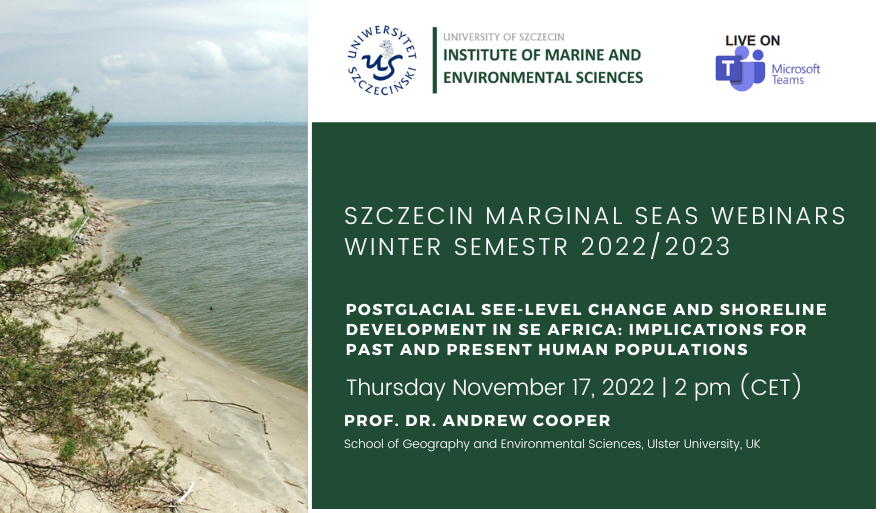
INoMiŚ zaprasza na wykład
Instytut Nauk o Morzu i Środowisku Uniwersytetu Szczecińskiego oraz Sekcja Geologii Morza Komitetu Badań Morza Polskiej Akademii Nauk i DDE Marginal Seas Task Group zapraszają na kolejne spotkanie naukowe cyklu Szczecin Marginal Seas Webinars, które odbędzie się w czwartek 17 listopada br.
Gościem Instytutu Nauk o Morzu i Środowisku US będzie światowej sławy badacz strefy brzegowej prof. dr. Andrew Cooper z Ulster University (UK), który wygłosi referat pt. „Postglacial sea-level change and shoreline development in SE Africa: implications for past and present human populations”.
Wykład odbędzie się 17 listopada br. o godzinie 14:00 w budynku na ul. Mickiewicza 16, sala 111 oraz na platformie Microsoft Teams.
Kod do wydarzenia: 2sc5rph
Zapraszamy do udziału.
Abstract
The relationship between sea-level change and shoreline response is complex and is governed, amongst other things, by the rate of sea-level change, sediment supply/volume and antecedent topography. The nature of the shoreline and its response to changing sea level have important implications for human societies in the past and in the present.
In SE Africa, sea level has changed over a vertical range of >130 m since the last interglacial. The course of sea level change is reflected in the development and preservation of shoreline deposits that are preserved on the narrow continental shelf and along the modern shoreline. Shoreline morphology shows marked differences at different sea-level stages and these mainly reflect variations in geological setting. The preservation of shorelines is linked to alternating periods of slow and fast sea-level rise and they occur at predictable elevations and time periods. These observations have the potential to inform prediction of future shoreline position.
The changing nature and position of the shoreline has influenced its exploitation by humans and various forms of evidence of human utilisation are preserved. In the Anthropocene, threats to human interests from changes in shoreline position are reciprocated by threats to shoreline integrity via human interventions.







